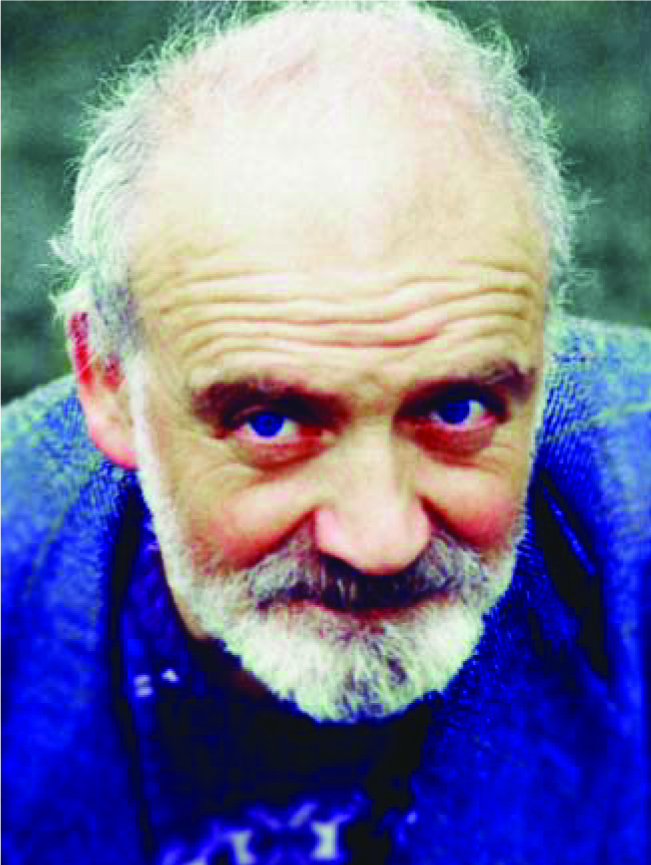Alexander Mikhailovich Dykhne
DOI: 10.1063/1.2138434
Alexander Mikhailovich Dykhne, an outstanding theoretical physicist, died of a heart attack in Moscow on 6 January 2005. He was a physicist who embraced general quantum mechanics, statistical physics, condensed matter physics, biophysics, plasma and laser physics, and nuclear physics and technology. In each of these fields, he made seminal contributions.
Alexander (Sasha) Dykhne was born on 27 October 1933 in Moscow. When he was four years old, his parents were arrested during Stalin’s purges. His father was executed and his mother spent nearly 20 years in jails and camps. Sasha was raised by his aunt, who managed to give him a good education.
After graduating with a master’s degree from Kiev Technical University in 1956, Sasha worked for a year as an engineer at the Kuznetsk Metallurgical Plant in Siberia. In 1958 he joined a group of theorists headed by Yuri (George) Rumer at the Institute of Radiophysics, which was with the Siberian Branch of the Academy of Sciences of the USSR in Novosibirsk. His scientific adviser was one of us (Pokrovsky). While continuing studies initiated in this group, Sasha extended the Landau—Zener theory of quantum transitions at two-level crossings to the case when the crossing point occurs in the complex time plane. The result, called the Dykhne formula, was highly valued by Lev Landau, who participated in discussions about it; that result has found numerous applications. Sasha also calculated exponentially small changes of classical adiabatic invariants and the band structure in a semiclassical periodic potential. He summarized those results and the Dykhne formula in his PhD thesis, which he defended in 1960.
In 1962 Sasha accepted a position at the Kurchatov Institute of Atomic Energy in Moscow, where he worked for many years in the group headed by Eugenii Velikhov, with whom Sasha was connected by permanent scientific cooperation and friendship. In his later years, Sasha directed the Center of Theoretical and Computational Physics at Troitsk Innovation Center (TRINITI) of the Russian Academy of Sciences. He became a full member of the RAS in 1992.
Sasha undertook scientific activities in several directions simultaneously. He was a pioneer in soft-matter physics. In the mid-1960s, he stormed the nascent field of molecular biophysics by solving a major theoretical problem in the field: the helix—coil transition. Together with two of us (Vedenov and Frank-Kamenetskii), Sasha proposed a model of a heteropolymer consisting of two residues in a random sequence, which displayed the helix—coil transition. That work remains a landmark in the theoretical understanding of DNA. In the same period and in the decades to come, he put forward new ideas about the role of topological knots in polymers, and specifically in DNA. He proposed an exceedingly elegant method of generating an equilibrium ensemble of closed polymer chains, which has been used extensively.
In statistical physics and condensed matter theory, Sasha’s main achievement was what is now called the Dykhne duality relations for the conductivity tensor of a two-dimensional heterogeneous conductor. Extremely simple, general, and elegant, the duality relations can be applied to admixtures of different quantum Hall phases of 2D electron gas. For random 3D anisotropic conductors, however, the duality relations do not apply. So to address that problem, Sasha and one of us (Dreizin) introduced the notion of current bottlenecks and found the resistivity of polycrystalline systems and their magnetoresistance in a strong magnetic field.
In plasma physics, Sasha predicted and analyzed new phenomena of the ionization instability: the ionization wave and ionization turbulence. He proposed a macroscopic description of the turbulent plasma by its coarse-grained resistivity tensor. The predicted phenomena were observed in experiments performed at Sasha’s suggestion.
In nuclear physics and nuclear security, Sasha studied how radioactive wastes penetrate from security storage to the environment. He found the effect of superdiffusion: In very inhomogeneous (fractal) media, rare optimal trajectories allow the propagation of radionuclides across long distances with a probability much higher than that of the common diffusion process.
For many years Sasha taught theoretical physics at the Moscow Institute of Physics and Technology. Trying to narrow the gap between fundamental science and technology, he organized a department of applied theoretical physics. His former students now work at leading science centers worldwide.
As a scientist, he felt strong obligations toward society. He performed his rather significant leadership duties with a skill unusual for many scientists. He headed not only TRINITI, but also simultaneously the Expert Committee of the Ministry of High Education and the Russian Expert Committee on Fundamental Studies (the analogue of NSF). He participated in two Russian—American committees: one on higher education and the other on the reliability of nuclear waste storage.
A brilliant and magnetic person, Sasha was also warm and open; he helped many people and had friends everywhere. He had an exceptional sense of humor, and his jokes were unexpected, funny, and to the point. He loved life. A brave man, Sasha participated in the cleanup of the Chernobyl nuclear disaster and in so doing displayed extraordinary personal courage, which was recognized in 1996 on the 10th anniversary of the disaster, when he received the Russian Federation Order “For Rescue of Victims.”
For each of us, and for his numerous friends and disciples, his death is an irreplaceable loss.


More about the Authors
Yuri A. Dreizin. 1 Protomold Company, Maple Plain, Minnesota, US .
Maxim D. Frank-Kamenetskii. 2 Boston University, Boston, Massachusetts, US .
Valery L. Pokrovsky. 3 Texas A&M University, College Station, US .
Boris I. Shklovskii. 4 University of Minnesota, Minneapolis, US .
Alexander A. Vedenov. 5 Kurchatov Institute of Atomic Energy, Moscow, US .




